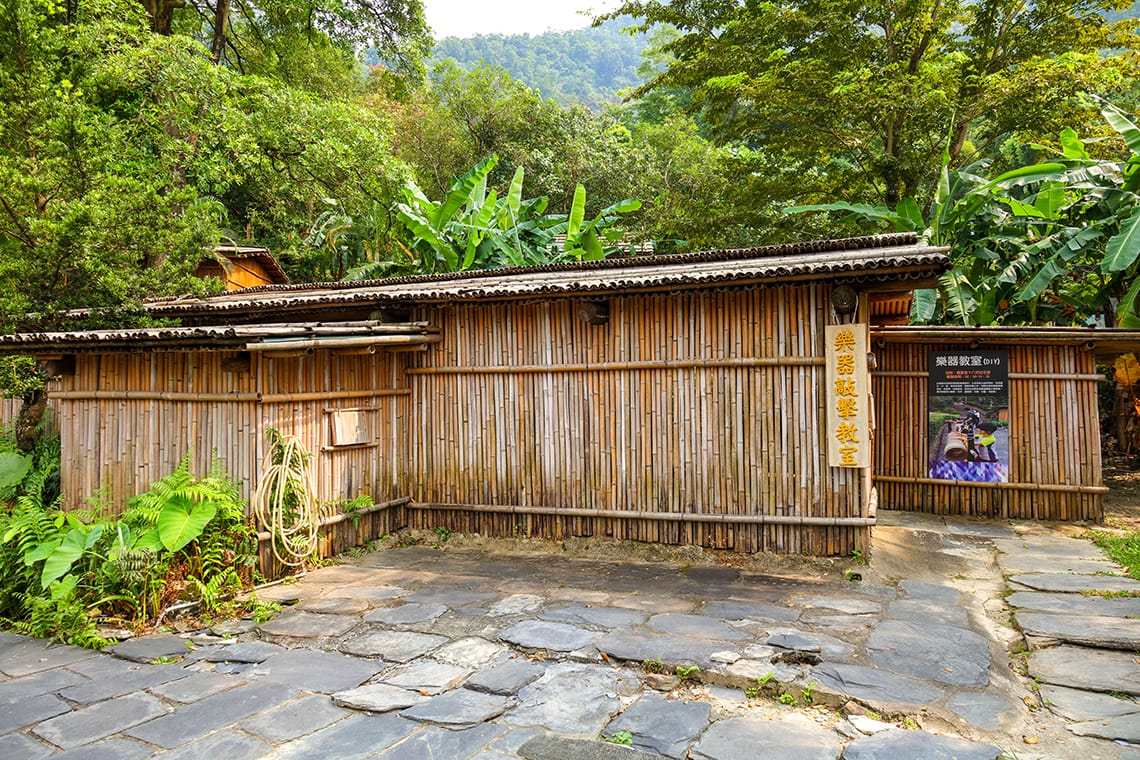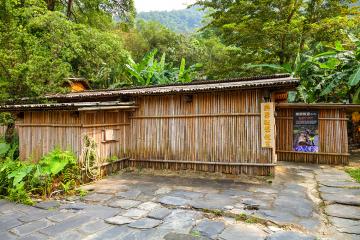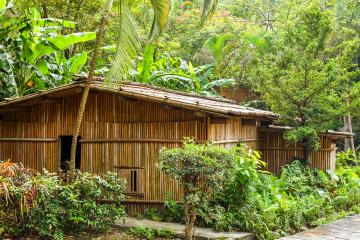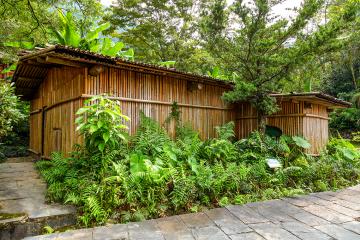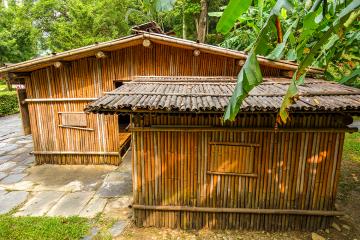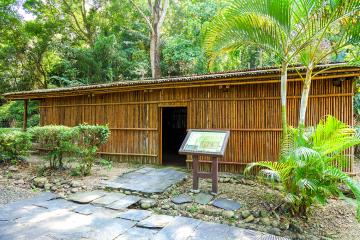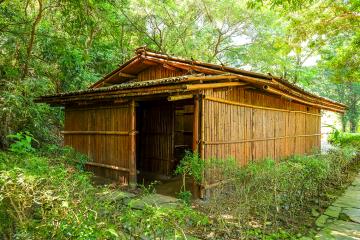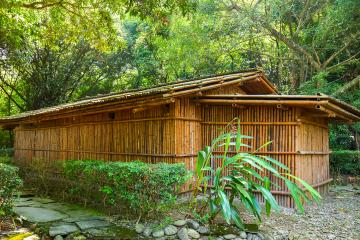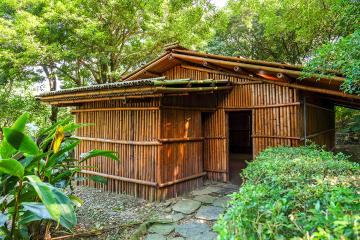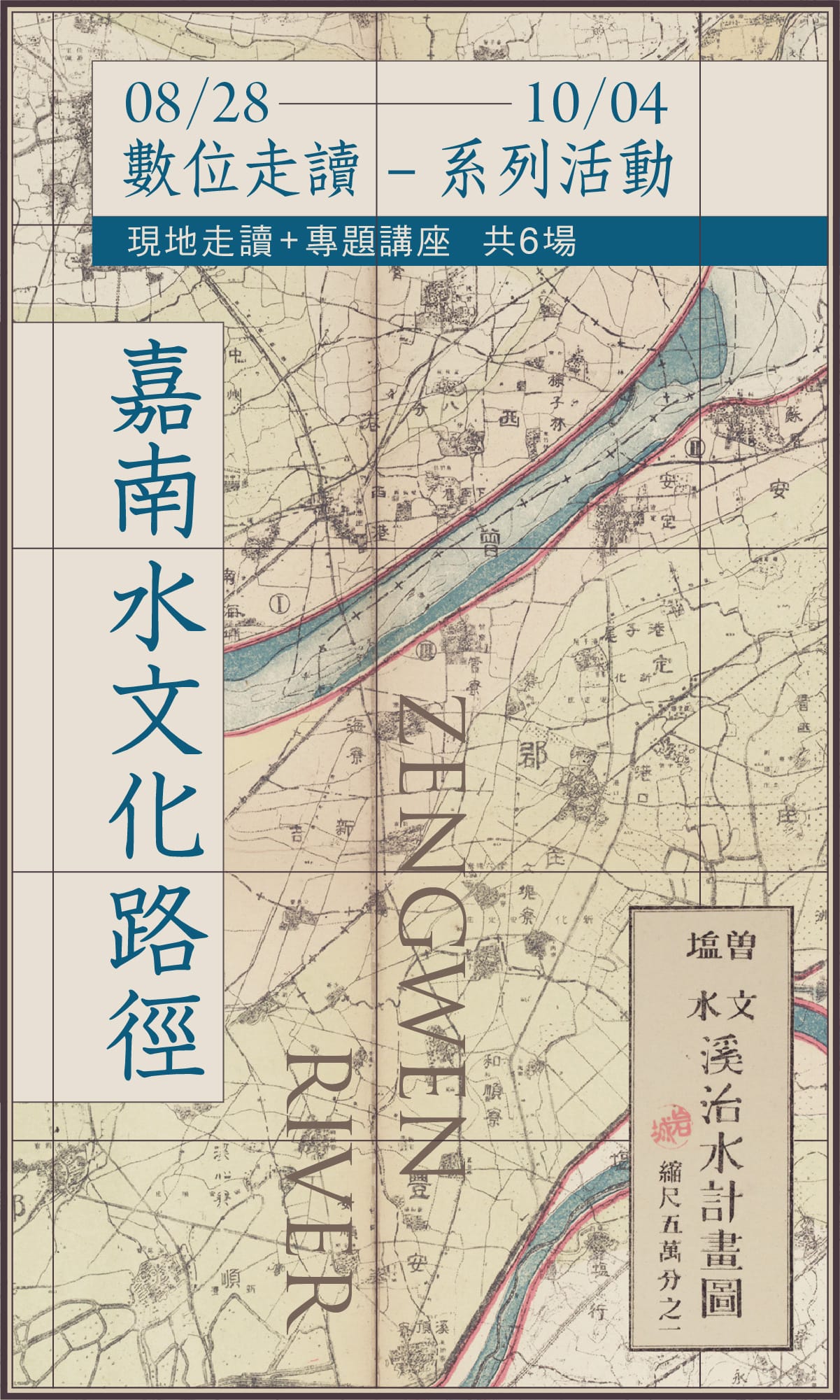景點介紹
賽夏族發源於大霸尖山,洪水時期,遷徙到阿里山附近,隨後曾落腳竹南、後龍、竹北、北埔等地,最後抵達現居地南庄鄉與五峰鄉。現居地盛產竹子,並毗鄰泰雅族與客家人,因此生活習慣與居住空間均受此影響。賽夏族傳統家屋為長方形地基,以粗竹或原木為柱,壁面以竹搭成,屋頂覆以竹片或茅草。
在漢人影響下,房屋內部由原有單一空間,漸轉變為具隔間設計,並於正廳設置祖先牌位。賽夏族傳統建築要素,以住屋正室內設有火塘取暖與烹煮食物,及屋門出入口倒掛動物下顎骨的獸骨架,最具象徵意義,但目前獸骨架已不復存在。
Saisiyat people originated from Mount Dabajian. During the flood period, they migrated to the vicinity of Alishan, and then settled in Zhunan, Houlong, Zhubei, Beipu and other places, and finally arrived in Nanzhuang Township and Wufeng Township where they now live. Since they are living adjacent to the Atayal and Hakka people and that the area is rich in bamboo, their living habits are greatly influenced by it. The traditional houses of the Saisiyat people have a rectangular foundation, with thick bamboo or logs as columns, bamboo walls, and thatch roof.
Under the influence of the Han people, the house interior gradually transformed from a single-room structure to having partitions inside the house. The ancestral tablets that were placed in the main hall was also an influence from the Han people. Some traditional architectural elements of Saisiyat people include a fire pit in the main house for heating and cooking, and an animal-bone rack with hanging animal jawbones at the entrance and exit of the house.
十八兒社住家
十八兒社是舊地名,其住家係以竹子搭建壁面與屋頂之矩形空間,右方及後方各增建二間寢室,這類隨意增建的居住形式在賽夏族屢見不鮮。
踏進入口後即是大穀倉,入口左側為具高度私密性之竹牆隔間寢室,顯受漢人影響。
Traditional Saisiyat House in Shihbaer Village
Shihbaer is an old name for Wufeng Township in Hsinchu County. This house is built of bamboo. There are partitions inside the house to give more privacy, which was an influence from the Han people. Two additional bedrooms were added to the right and the rear. This kind of addition of living space is common among the Saisiyat people.
大隘社住家
為矩形空間,入口右側為廚房,置有杵臼一組。廚房後係以竹牆隔間之大寢室。祖先神靈籐籠正對大門,並倚後橋而立,籐籠兩側放置了籐編穀倉籠及杵臼。屋內右側有兩個寢床,中間爐灶為原型配置。
Traditional Saisiyat House in Da’ai Village
The house is rectangular in shape, with a kitchen on the right side of the entrance, where there is a set of pestles and mortars. Behind the kitchen is a large bedroom with a bamboo partition.
The rattan cage, a symbol of the ancestors, is facing the entrance. Next to it are other rattan cages for storage. There are two beds on the right side of the house, and a stove in the middle, which is a typical Saisiyat interior layout.
瓦羅社住家
原建於海拔約450公尺之南庄鄉。與前二處最大差異是外型呈縱向延伸,並分為前、後二室,此「前堂後室」設計當是受到漢人空間配置觀念影響。前室有一寢臺,旁有一灶,起居空間寬闊;後室有一寢臺及漢式爐灶,其後設有廁所,空間較前室具私密性。
Traditional Saisiyat House in Waluo Village
This house was originally built in Nanzhuang Township at an elevation of around 450 meters. It is long in shape and so the interior space is divided into front and rear parts, which is the same space configuration as Han people’s houses. Both rooms have a sleeping platform, the front room has a stove while the back room has a Chinese stove, a toilet behind it, and has more privacy.
撰稿者:原住民族委員會原住民族文化發展中心
景點地圖
精彩照片


